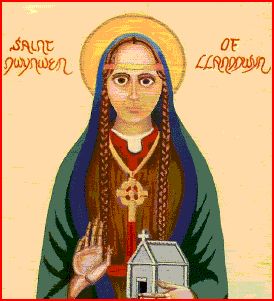The word cement is known from before 1300, and is spelt cyment in Kyng Alisaunder. Later, circa 1330, it became siment, from the Old French ciment, which came from the Latin caementum, which meant rough stone, rubble. The spelling that we know today appeared before 1398, which also came from French. Thus, the word was pronounced differently, with the emphasis on the first syllable. Only recently, in the last century or so, has the emphasis shifted to the second syllable. In English, cement has always described a pasty mixture that hardens into a rocklike substance. Originally, though, cement was the rubble that was mixed with lime and water to form mortar.
Concrete has a longer history, with more varied and subtle meanings. It has only been used as a noun since 1834, where it described a mixture of sand, gravel and water with cement to form a solid mass. Nonetheless, concrete was used as an adjective from before 1398, to denote an actual substance rather than a quality. This meaning came from the Latin concretus, which was the past participle of concrescere - to harden, solidify. Primarily a term used by logicians and grammarians to contrast with abstract, from the 1600s it became to mean real or particular (that is, not abstract or general) and can be found in Milton's poems and Carlyle's philosophical works.

 However, a form of concrete was used by the Romans who called it opus caementicium, a mix of lime and stone rubble. One superb example of Roman architecture that used their form of concrete is the Pantheon in Rome with it's amazing dome (see the pictures on the left). The Byzantines also used concrete, but the process was lost or forgotten in England until the eighteenth century. The architecture Smirke used concrete when he built the British Museum in 1823 (see below right). So the next time you visit, take a look at this structure. It has housed some of the treasures of Britain for over two centuries. This does not compare to the Roman Pantheon, but it's a bit closer to home...
However, a form of concrete was used by the Romans who called it opus caementicium, a mix of lime and stone rubble. One superb example of Roman architecture that used their form of concrete is the Pantheon in Rome with it's amazing dome (see the pictures on the left). The Byzantines also used concrete, but the process was lost or forgotten in England until the eighteenth century. The architecture Smirke used concrete when he built the British Museum in 1823 (see below right). So the next time you visit, take a look at this structure. It has housed some of the treasures of Britain for over two centuries. This does not compare to the Roman Pantheon, but it's a bit closer to home...Sources:
Chambers Dictionary of Etymology (1988), Chambers.
Curl, James Stevens (1989) Oxford Dictionary of Architecture, Oxford University Press.
Images:
British Museum (date unknown) [online], www.jhstudioglass.com/British-Museum-Designs/ (accessed 30th September 2011)
Pantheon (2011) [online], www.gothereguide.com/pantheon-rome-place/2011 (accessed 30th September 2011)














 This 5th century saint, like many female saints, had a problem with a man. Although she was in love with Prince Maelon Dafodrill, when he tried to seduce her she rejected his advances and he attacked her. Very upset, she prayed to God for her love for Maelon to be erased. She was given a sweet potion to drink and all her hurt and anguish disappeared and Maelon was turned into a block of ice. She then asked for and was granted three wishes - that Maelon was made whole again; to be allowed to remain celibate for the rest of her life; and to be able to intercede on behalf of other lovers.
This 5th century saint, like many female saints, had a problem with a man. Although she was in love with Prince Maelon Dafodrill, when he tried to seduce her she rejected his advances and he attacked her. Very upset, she prayed to God for her love for Maelon to be erased. She was given a sweet potion to drink and all her hurt and anguish disappeared and Maelon was turned into a block of ice. She then asked for and was granted three wishes - that Maelon was made whole again; to be allowed to remain celibate for the rest of her life; and to be able to intercede on behalf of other lovers.


